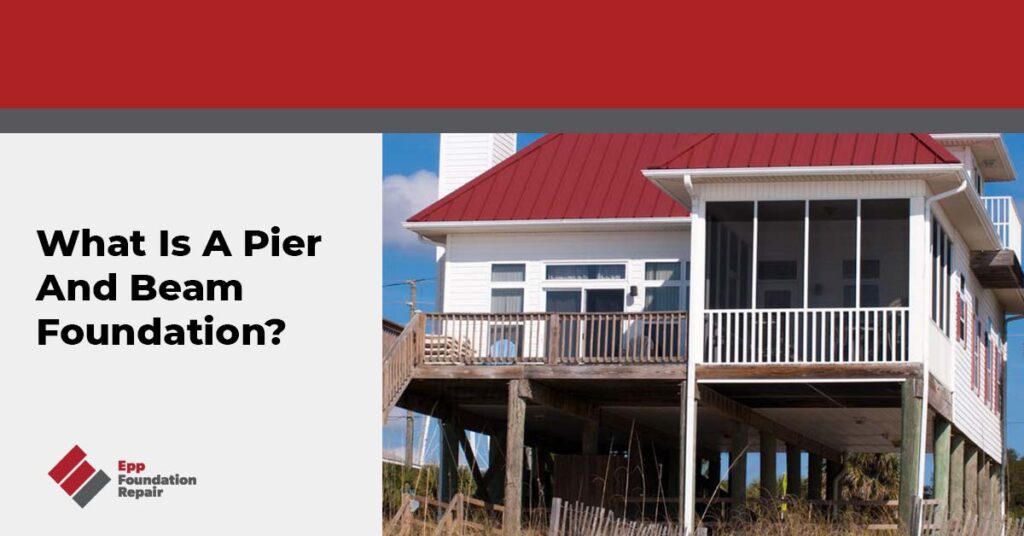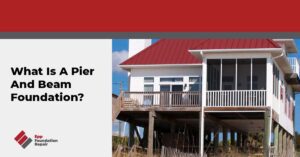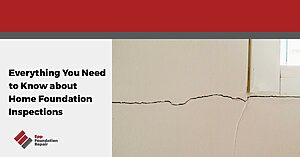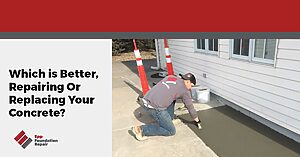Before the 1960s, the pier and beam foundation was the foundation of choice. While pier and beam foundations are still being built, slab foundations are more popular today.
In this article, we’ll go over what a pier and beam foundation is, the benefits of a pier and beam foundation, pier and beam foundation repair, and more.
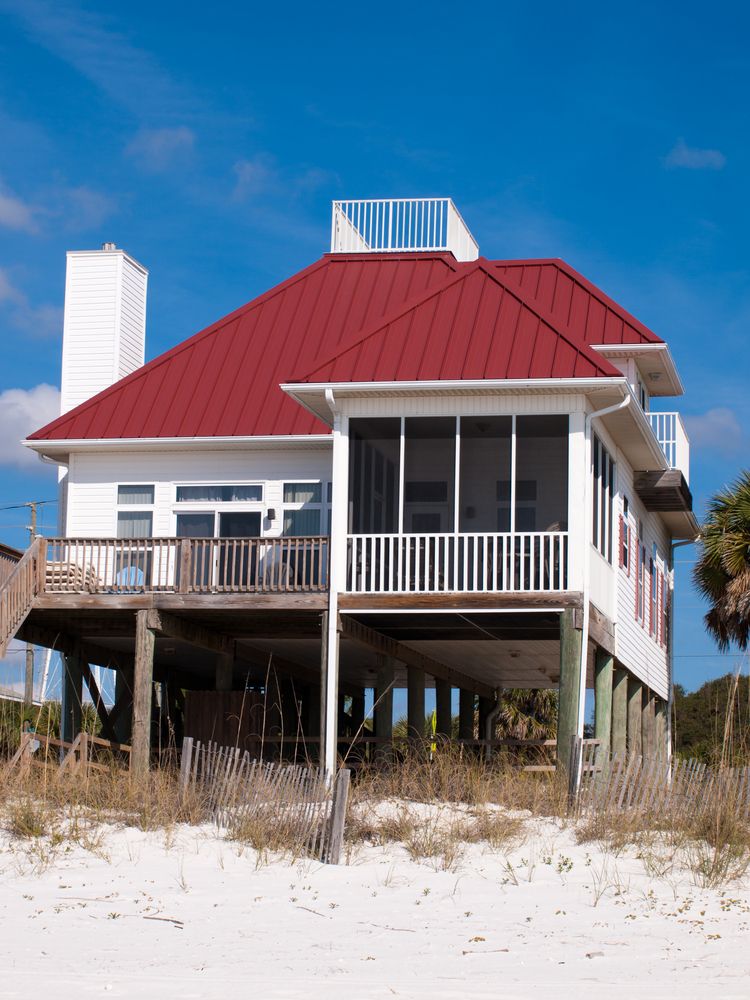
What Is A Pier And Beam Foundation?
A pier and beam foundation is a foundation that raises the house off the ground creating a space underneath. You’ve undoubtedly seen houses on stilts near bodies of water. Those are pier and beam foundations.
When walls enclose the space under a pier and beam foundation, you get a crawl space foundation. In other words, a crawl space foundation is a type of pier and beam foundation. Crawl space foundations usually raise the home from 1.5 to 3 feet off the ground, which is just enough room to crawl around.
Pier and beam foundations have been a long-time favorite because they’re easy to build and less expensive than basement foundations. Pier and beam foundations are more common in areas with problematic soil conditions and where the cold climate prevents the use of a slab foundation.
The Benefits Of A Pier And Beam Foundation
The pros of a pier and beam foundation are many, including the following:
- Pier and beam foundations are easy to build. They’re less expensive to construct than basement foundations and don’t require extensive excavation.
- A raised foundation protects the house from water, including floods.
- A pier and beam foundation offers maintenance crews easy access to the home’s plumbing and wiring. Therefore, a pier and beam foundation is often less expensive to repair than other types of foundations.
- Pier and beam foundations are a good choice for climates where the ground freezes and there’s a danger of foundation damage from frost heave.
- Pier and beam foundations can be built on lots that slope.
- The floor is more comfortable to walk on because there’s a slight amount of give.
- You can store things like tools and holiday decorations in a crawl space.
- Many homeowners find houses raised slightly to be more pleasing to the eye.
The Downsides Of A Pier And Beam Foundation
Most of the cons of pier and beam foundations have to do with the crawl space variety of pier and beam foundations.
- Pier and beam foundations cost more to build than slab foundations. They are less expensive to build than basement foundations, though.
- Unless you live in an arid region, crawl spaces tend to be damp.
- Moisture vapor can enter the crawl space through an uncovered dirt floor.
- Moisture in a crawl space can lead to wood rot and structural problems.
- Dark, damp crawl spaces look inviting to wood-eating pests and rodents with dangerous droppings.
- Some of the air from the crawl space flows into the home’s living area via the stack effect (see the illustration below). If there’s mold in the crawl space, this will affect the air quality inside the home.
- An unencapsulated crawl space can lead to higher humidity inside the home’s living area. You can prevent this by encapsulating the crawl space.
While there are downsides to a crawl space foundation, these can be prevented by proper drainage around the foundation and crawl space encapsulation.
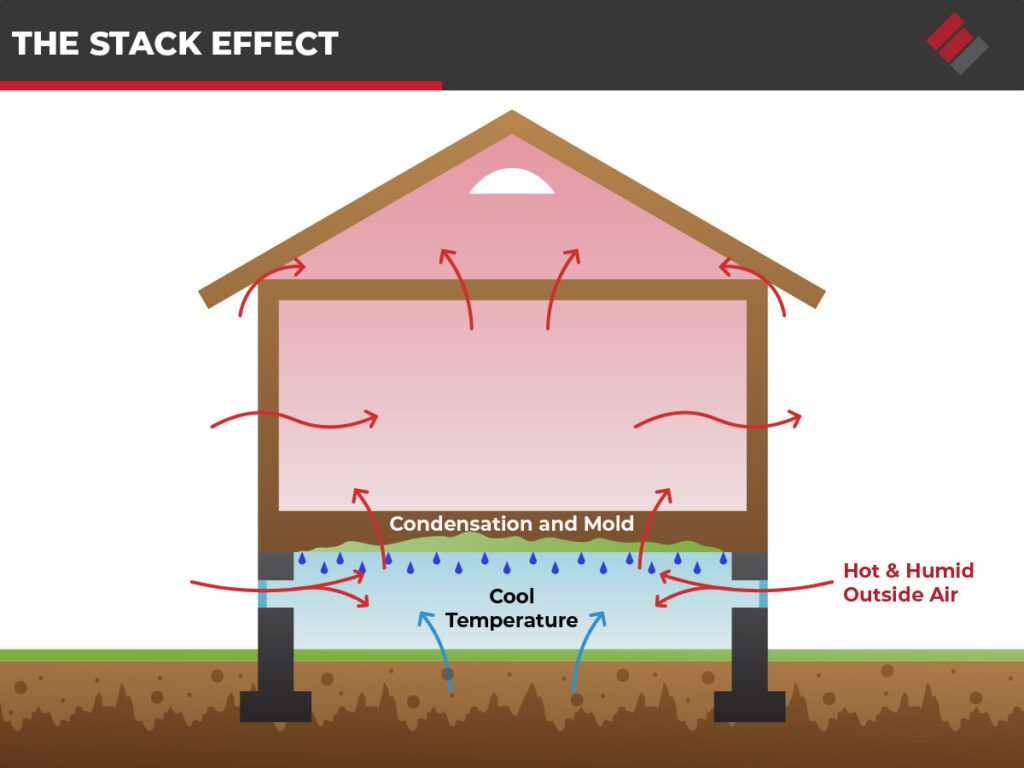
Pier And Beam Foundation Repair
How you repair a pier and beam foundation depends on what’s wrong with it. Usually, the problem is related to either settlement – either the piers or the foundation itself – or moisture.
Problems related to foundation settlement
Foundation settlement can happen when problematic soils cause movement under the foundation. For example, clay with a lot of soil in it (called expansive soil) swells when it soaks up moisture and shrinks when it releases moisture and dries out. This back and forth, swelling and shrinking, creates movement under the foundation, leading to differential foundation settlement. The foundation’s perimeter beam settles into the soil but not uniformly. Over time, the piers can also shift and settle into the ground. (See the graphic below for more information.) Foundation settlement and settled piers can cause problems like cracks, trouble opening and closing doors and windows, uneven floors, etc.
Repair methods might include underpinning the perimeter beam using push or helical piers, adding more support piers under the house, repairing damaged support piers, adding more joists, replacing deteriorated screw jacks, etc.
Problems related to moisture
Moisture-related problems like mold and wood rot usually concern the crawl space type of pier and beam foundation because of the enclosed space underneath the house. This problem can be solved with a good drainage system around the foundation and crawl space encapsulation. For more information, see Don’t Install A Crawl Space Dehumidifier Without Encapsulation.
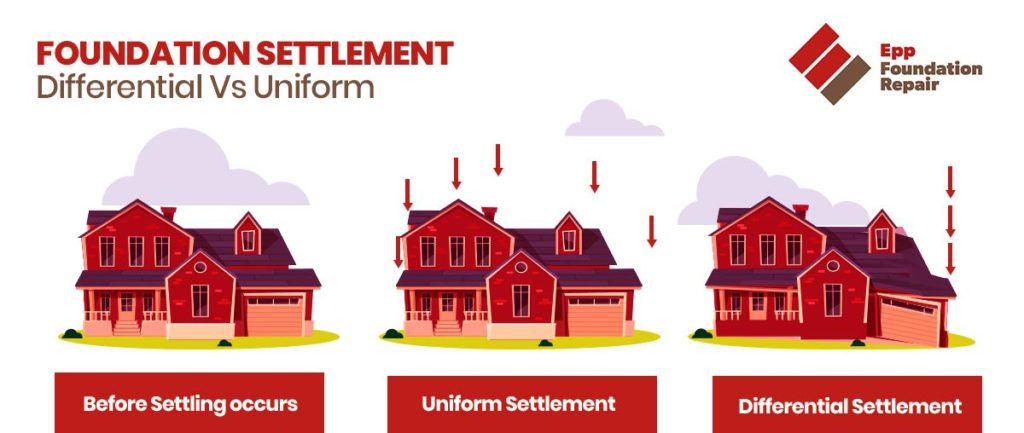
How To Prevent Problems With A Pier And Beam Foundation
Since most foundation issues are caused by excess moisture in the soil around a foundation, you can go a long way toward preventing problems by simply getting groundwater under control. Here are a few ways to do that:
- Make sure the yard around your home slopes away from the foundation. You don’t want water draining toward the foundation.
- Clean your gutters regularly. Clogged gutters can cause runoff to spill over the side of the house and soak the soil around the foundation.
- If your downspouts are too short, install extensions. Downspouts should release water at least four feet away from the foundation.
- Install an underground downspout with a pop-up emitter. Runoff flows into the underground downspout toward the pop-up emitter situated in your yard, around 10 feet away from the foundation. When the pop-up emitter is empty, it sits flush with the ground and is barely visible. When it fills with water, it pops up and releases the water away from the foundation.
- Don’t plant flowers, shrubs, and other water-hungry vegetation next to the foundation. You don’t want to give yourself a reason to add water to the soil around the foundation.
- Install a drain tile system. For more information on how drain tiles systems work, see How Does A Drain Tile System Work?
If you think there might be a problem with your pier and beam foundation home and you’re in our service area in Nebraska, Iowa, Kansas, and Missouri contact us today for an evaluation and repair estimate.

